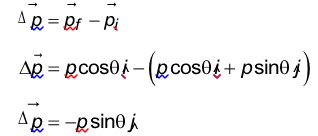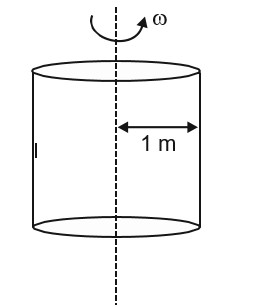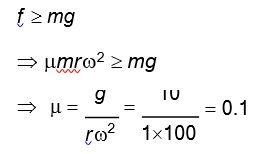Three objects A, B and C are kept in a straight line on a frictionless horizontal surface. The masses of A, B and C are m, 2m and 2m respectively. A moves towards B with a speed of 9m/s and makes an elastic collision with it. Thereafter B makes a completely inelastic collision with C. All motions occur along same straight line. The final speed of C is:
Three objects A, B and C are kept in a straight line on a frictionless horizontal surface. The masses of A, B and C are m, 2m and 2m respectively. A moves towards B with a speed of 9m/s and makes an elastic collision with it. Thereafter B makes a completely inelastic collision with C. All motions occur along same straight line. The final speed of C is:
Option 1 -
4 m/s
Option 2 -
6 m/s
Option 3 -
9 m/s
Option 4 -
3 m/s
-
1 Answer
-
Correct Option - 4
Detailed Solution:Let vel of A and B just after collision be VA & VB respectively.
m × 9 + 0 = m × VA + 2mVB
9 = VA + 2VB
again e = (VB - VA)/ (9-0) = 1
9 = VB - VA
From (i) & (ii)
VB = 6 m/s & VA = -3 m/s
Now, for B and C collision (completely inelastic):
2m × 6 + 0 = (2m + 2m)Vc
12m = 4mVc
Vc = 3 m/s
Similar Questions for you
T1 = m (g + a)
T2 = m (g - a)
Apparent weight = mg – ma
Taking an Exam? Selecting a College?
Get authentic answers from experts, students and alumni that you won't find anywhere else
Sign Up on ShikshaOn Shiksha, get access to
- 65k Colleges
- 1.2k Exams
- 679k Reviews
- 1800k Answers





